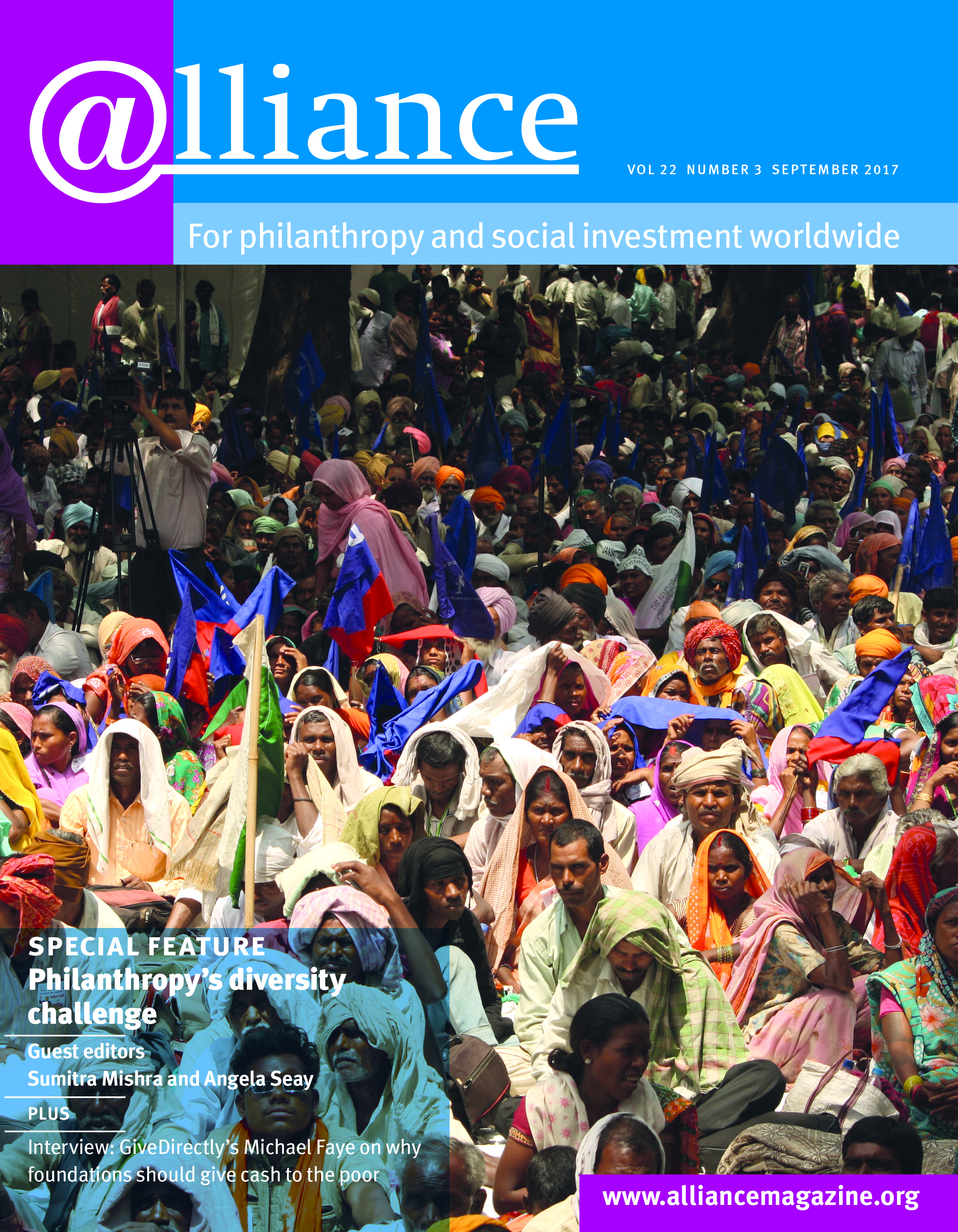There are at least two good reasons why foundation boards and senior management should be representative[1] of the communities they serve. First, they will naturally produce a greater variety of viewpoints and a wider range of experience, which arguably improves decision–making and problem-solving. Second, philanthropic organizations usually champion principles such as equality and fairness, but the reputation of the sector in which they operate will surely be weakened if these values are not reflected in the organizations that espouse them.
If the case for representative boards in the philanthropic sector seems clear, where do we go from here? The first point to make is that the needle has begun to shift on this issue and there is a growing momentum to take this forward.
Some excellent work has already been done by the likes of D5 in the US and by the European Foundation Centre’s Diversity, Migration and Integration Interest Group (the DMIIG), while in the UK the Ariadne community is currently looking at representation on the trustee boards and senior management of UK grantmaking organizations with a view to developing an initiative with interested foundations to take the issue forward.
Progress, however, has been slow, and the road not always smooth. For one thing, conventional foundation legacies and practices can be significant barriers to representative selection.
For example, the emphasis on executive experience more often than not eliminates those who would be able to bring first-hand experience and knowledge of communities. Recruitment criteria tend to emphasize management or governance experience, which leads to selection from a narrow range, with ‘unusual’ candidates who may have the competencies but not necessarily the contacts or experience being screened out.
Regulatory guidelines also give weight to certain aspects of trustees’ duties, like their fiduciary responsibilities, and this helps to further feed an already risk-averse selection mindset.
The emphasis on executive experience more often than not eliminates those who would be able to bring first-hand experience and knowledge of communities.
Nor is unconscious bias addressed as boldly as it should be. Even with the best of intentions people tend to recruit in their own image. This is very apparent if we consider the board composition of foundations in the UK.
Between 2005 and 2015, almost 30 per cent of the registered grantmaking trusts in England and Wales had men-only boards. In comparison, just 8 per cent of FTSE 250 companies and 3.6 per cent of S&P 500 companies had men-only boards in 2014, according to Factary, a research and fundraising consultancy.
Even with the best of intentions people tend to recruit in their own image.
So, what insights can be offered to organizations wanting to address the issue of representation at senior levels in the philanthropic sector? How about these for starters?
- Change is very slow. A five-year plan is the minimum that should be considered.
- Funder networks can provide support for a programme designed to work with a small group of foundations as they go through the process of diversifying their boards and later sharing their experiences with others. This would help to de-risk the approach and encourage others.
- Senior-level champions are needed to create and maintain momentum.
- Talent pipelines need to be fostered. If not, it will remain an easy fall-back for recruiters to say that there are no suitable candidates. Initiatives such as internships, mentoring, secondment and skills swap schemes can be incorporated into the operational activities of larger more progressive ‘exemplar’ funders.
- Approaches will vary. The right and moral case will resonate with some but, to be successful, the argument will also need to reach those who are yet to be convinced and to engage a spectrum that spans the cognitive and emotional space.
- Change will not come about automatically. A core group of committed foundations needs to set aside dedicated time and resources.
As the space for progressive values continues to shrink and be undermined, it falls to the philanthropic sector to do more to uphold these principles. What better way for foundations to do this than by reflecting those ideals in their senior management and boards?
Jenny Oppenheimer is UK co-ordinator of Ariadne, the European human rights funders network. Email jenny.oppenheimer@ariadne-network.eu
Footnotes
- ^ The term diversity can be quite polarizing. Since diversity is about showing variety, I prefer the term representation. Senior management should reflect the society in which it operates, a society with glorious complexities and intersections of age, race, ethnicity, gender, sexuality, ability, religion etc.







Comments (0)